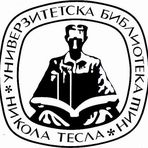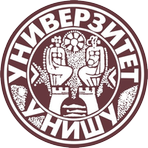Title
Sindrom sagorevanja, psihosomatsko reagovanje, motivacija za postignućem i dimenzije ličnosti kod zaposlenih na rukovodećim i nerukovodećim radnim mestima
Creator
Cvetković, Slobodanka 1979-
Copyright date
2016
Object Links
Select license
Autorstvo-Nekomercijalno-Bez prerade 3.0 Srbija (CC BY-NC-ND 3.0)
License description
Dozvoljavate samo preuzimanje i distribuciju dela, ako/dok se pravilno naznačava ime autora, bez ikakvih promena dela i bez prava komercijalnog korišćenja dela. Ova licenca je najstroža CC licenca. Osnovni opis Licence: http://creativecommons.org/licenses/by-nc-nd/3.0/rs/deed.sr_LATN. Sadržaj ugovora u celini: http://creativecommons.org/licenses/by-nc-nd/3.0/rs/legalcode.sr-Latn
Language
Serbian
Cobiss-ID
Theses Type
Doktorska disertacija
description
Datum odbrane: 21.09.2016.
Other responsibilities
mentor
Marković, Zorica 1952-
član komisije
Stojiljković, Snežana 1954-
član komisije
Kostić, Petar
član komisije
Kostić, Aleksandra 1953-
član komisije
Milenović, Miodrag 1959-
Academic Expertise
Društveno-humanističke nauke
University
Univerzitet u Nišu
Faculty
Filozofski fakultet
Group
Departman za psihologiju
Alternative title
Burnout, Psychosomatic Reactions, Achievement Motivation And Personality Dimensions Among Employees in Managerial And Non-Managerial Positions
Publisher
[S. Cvetković]
Format
223 lista
description
Prilozi: listovi 207-221
description
Industrial Pscychology
Abstract (en)
The aim of this study is to determine if there is a difference among managers and executives in terms of burnout, tendency to psychosomatic reactions, achievement motivation and personality (based on Big Five model). The study was conducted on 338 employees. The instruments that were used are: MBI-GS, HI test from KON 6, MOP test, NEO PI-R & Fiedler’s Least Preferred Coworker Scale (LPC).
The results show that there is not difference in burnout between managers and executives. Still it is confirmed the difference in exhaustion and cynicism: managers showed a higher level of exhaustion, while executives showed a higher level of cynicism. There is no difference in overall achievement motivation, but it is confirmed the difference on persistence and planning (higher for managers). There is no difference in psychosomatic reactions or in personality, except higer level of executives’ Neurotisizm. Managerial styles & the length of service are not significant sources of differentiation of basic variables. Males, managers showed higer level of burnout, while women, executives, showed higher level of some aspects of achievement motivation. These findings were confirmed by canonical discriminant analysis: personality profiles of managers and executives are significantly different - executives showed higher level on Neuroticism, Agreebleness, Cynicism, Psychosomatic & Competition and lower level on Persistence, Planning, Exhaustion and Consciousness.
With taking these results into consideration we can conclude that job demands of different levels of organization reflect on personality of employees and may contribute to the burnout. Identification of bournout aspects within organization and further examination of factors that contribute to burnout, represent the possibility of results practical implementation in burnout prevention. This can contribute to improving the health of employees, as well as increasing their motivation and satisfaction, which are the fundamentals of a successful business.
Authors Key words
sindrom sagorevanja, psihosomatsko reagovanje, motivacija za postignućem, petofaktorski model ličnosti, Fidlerov kontingencijski model rukovođenja, rukovodioci i izvršioci
Authors Key words
Burnout, Tendency to psichosomatic reaction, Achievement motivation, Big Five model, Fiedler Contingency model, managers, executives
Classification
159.923
Subject
159.944.4(043.3)
Subject
S260
Type
Elektronska teza
Abstract (en)
The aim of this study is to determine if there is a difference among managers and executives in terms of burnout, tendency to psychosomatic reactions, achievement motivation and personality (based on Big Five model). The study was conducted on 338 employees. The instruments that were used are: MBI-GS, HI test from KON 6, MOP test, NEO PI-R & Fiedler’s Least Preferred Coworker Scale (LPC).
The results show that there is not difference in burnout between managers and executives. Still it is confirmed the difference in exhaustion and cynicism: managers showed a higher level of exhaustion, while executives showed a higher level of cynicism. There is no difference in overall achievement motivation, but it is confirmed the difference on persistence and planning (higher for managers). There is no difference in psychosomatic reactions or in personality, except higer level of executives’ Neurotisizm. Managerial styles & the length of service are not significant sources of differentiation of basic variables. Males, managers showed higer level of burnout, while women, executives, showed higher level of some aspects of achievement motivation. These findings were confirmed by canonical discriminant analysis: personality profiles of managers and executives are significantly different - executives showed higher level on Neuroticism, Agreebleness, Cynicism, Psychosomatic & Competition and lower level on Persistence, Planning, Exhaustion and Consciousness.
With taking these results into consideration we can conclude that job demands of different levels of organization reflect on personality of employees and may contribute to the burnout. Identification of bournout aspects within organization and further examination of factors that contribute to burnout, represent the possibility of results practical implementation in burnout prevention. This can contribute to improving the health of employees, as well as increasing their motivation and satisfaction, which are the fundamentals of a successful business.
“Data exchange” service offers individual users metadata transfer in several different formats. Citation formats are offered for transfers in texts as for the transfer into internet pages. Citation formats include permanent links that guarantee access to cited sources. For use are commonly structured metadata schemes : Dublin Core xml and ETUB-MS xml, local adaptation of international ETD-MS scheme intended for use in academic documents.


